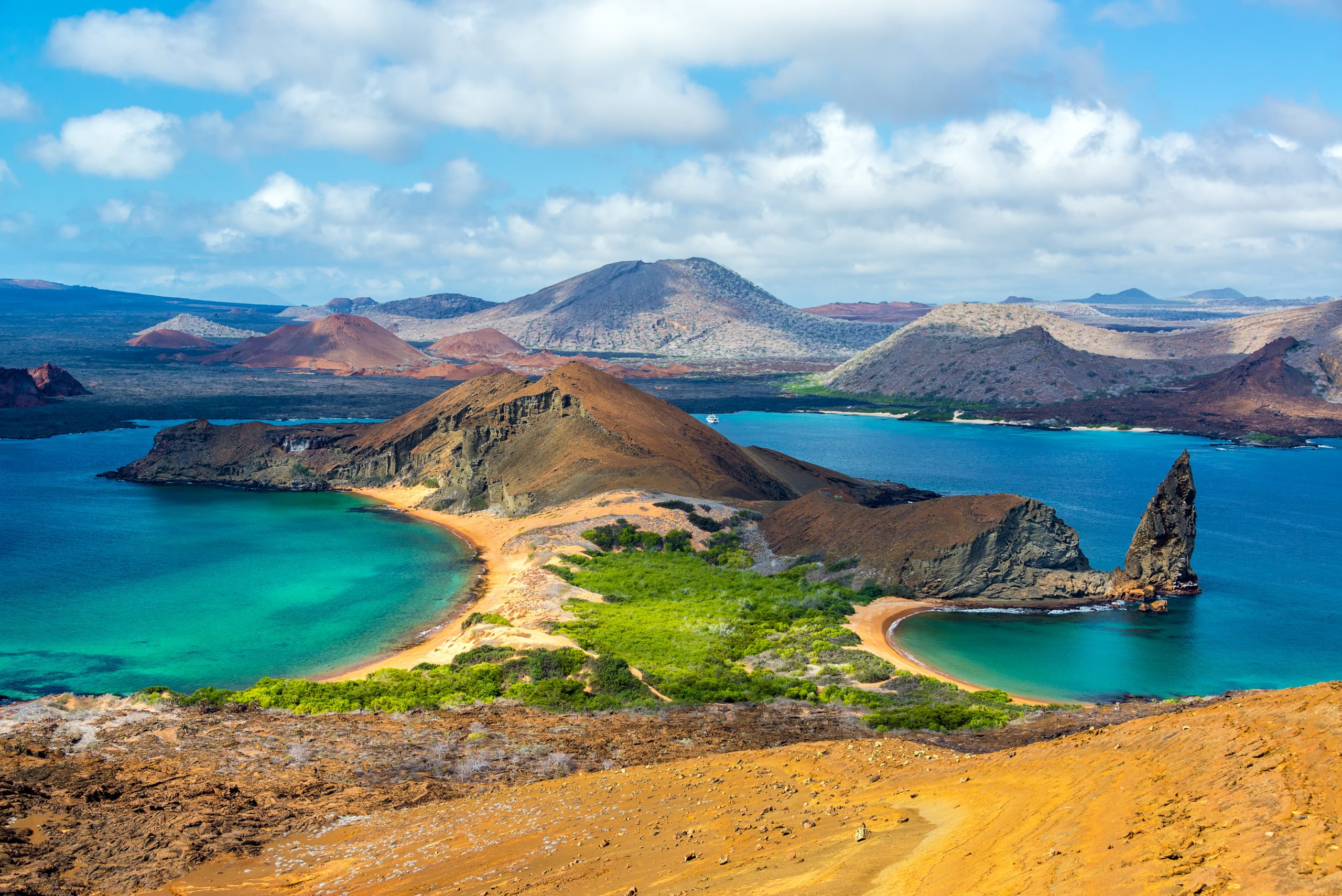Ecuador boasts a unique natural wonder beyond its mainland—a volcanic region forming small islands known globally as the Galapagos or Enchanted Islands. The Pacific archipelago, 1000 km from Ecuador’s coast, comprises 19 islands, boasting incomparable endemic flora and fauna treasures. Finish your ride in Ecuador with Galápagos Islands.
History
Discovered in 1535 by Fray Tomas de Berlanga, the islands have captivated pirates, whalers, scientists, and naturalists with their enchanting allure. Proximate to the continent, the islands were a strategic hideout for 18th-century pirates, plotting attacks on America’s coast. Due to its location and currents, the Galapagos teem with marine life, including diverse whale species, attracting 19th-century whalers worldwide.

For centuries, Galapagos endured abuse by pirates, whalers, and settlers despite their natural significance, striving to inhabit them. Recognition and significance dawned on the islands in 1835 with English naturalist Charles Darwin’s arrival, altering their trajectory forever. Charles Darwin, scientist and naturalist, sailed globally on HMS Beagle, collecting evidence and species for his theory of evolution. His findings culminated in the publication of “The Origin of Species through Natural Selection.”
These islands gained fame among scientists worldwide, earning the nickname “the laboratory of evolution.” Isolated from human populations for centuries, their animals evolved in various ways to survive diverse island conditions. For instance, giant turtles developed shells of different shapes and leg lengths depending on their habitat, showcasing diverse evolutionary adaptations.
World Heritage Site
In 1959, the Republic of Ecuador took the advice of naturalists, biologists and scientists and after closing the penal colony that existed on these islands, declared it a national park. Since 1960, the Galapagos began thriving as a tourist destination. In 1978, UNESCO recognized it as a World Heritage Site for its diverse underwater wildlife, geological interest, and rich animal wealth, alongside its significance in evolutionary biology. Six years later, it was declared a Biosphere Reserve in 1985.
In 2007, UNESCO declared the Galapagos Islands a World Heritage Site at environmental risk, placing them on the List of World Heritage in Danger. However, due to conservation efforts and raised environmental awareness, they were removed from this list in 2010. Today, the Galapagos Islands attract the highest number of tourists in Ecuador and are renowned worldwide, particularly among divers. They offer unparalleled opportunities to witness a vast array of fauna in their natural habitat.
There are approximately 70,000 visitors in the Galapagos islands every year. The ecosystem of the islands is extraordinary, and make the tourist feel as if they were in a living museum. However, it is very fragile because even small changes can cause a great alteration in the ecosystem. For that reason, tourists have to pay an entrance fee when they arrive on the islands.
Wildlife
One of the island’s wonders is the fearlessness of its animals toward humans, attributed to their protected status. Remarkable wildlife encounters include sharing the beach with sea lions, playing and swimming with them, and observing sharks. Visitors can closely observe tropical fish, penguins, stingrays, sea turtles, and unique species that breed on these islands.

Due to their equatorial location, the islands boast excellent temperatures year-round, making them accessible for visits in any month. However, certain special species may be more abundant in specific months. From January to May, expect hotter and drier weather with temperatures around 20 degrees Celsius. From June to September, the climate becomes hazier, occasionally dropping temperatures to an average of 22 degrees.
Knowing the islands varies with budget, from luxury cruises exploring remote areas to daily tours from inhabited islands like Santa Cruz, San Cristóbal, and Isabela. It is advisable to make a reservation in advance since having a limit of people who can visit them, spaces on cruises, hotels and other activities tend to run out soon. A suggestion: March to May typically offer the best conditions, being outside the peak summer season, with easier access and better prices. Finish your ride in Ecuador with Galápagos Islands.
Scuba diving
A 100% recommended activity to do on these islands is scuba diving, and if not possible, snorkeling. Situated amidst three marine currents, these islands boast abundant marine life. Dolphins, whales, sharks, marine iguanas, manta rays, and fish of all colors and sizes inhabit these waters. Swimming with hammerhead sharks, turtles, and the rare but beautiful sunfish, or mola-mola, is not uncommon.
Being on land we can marvel at reptiles, birds, sea lions, blue-footed boobies, cormorants, albatrosses, frigates with red chests, land iguanas of different colors, giant tortoises and more animals to leave us incredible postcards. Don’t wait any longer to discover this laboratory of evolution and life with unique animals and plants on the planet. After a good time riding in Ecuador, the perfect dessert is at least four days in the islands.
Thanks to our chain of hotels and tour operators we work with, you can include you this package as part of your whole visit in Ecuador. Please take a look at one of our tours for more information, choose your motorcycle brand, and ride on!
| Visit Us | Finish your ride in Ecuador with Galápagos Islands